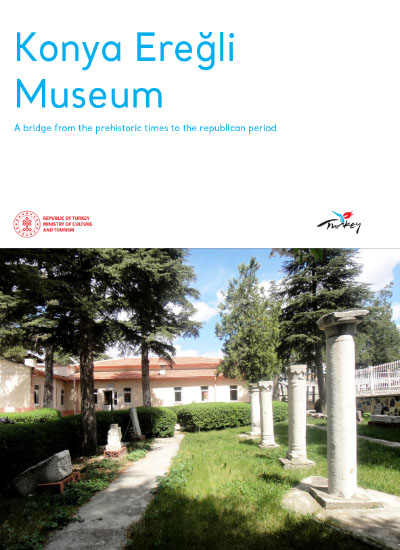The Halil Paşa Mansion was constructed in the late 19th century by Halil Paşa Karamahmutoğlu, a prominent figure in the city. The mansion was built on the site of an ancient church, and the building materials were reused, particularly on the facade decorations. The building is three-storey with a ground floor and a central sofa plan. The ground floor of the building houses a collection of marble grave steles belonging to various historical periods, including the Greek, Roman and Byzantine eras. These steles were collected from the surrounding area of Ereğli. Additionally, the ground floor displays a range of glass containers, jewellery and findings from excavations at the ancient city of Filyos, Yassıkaya Cave and Inonu Cave. Furthermore, the ground floor also exhibits a selection of coins dating to various historical periods, including the ancient Greek, Roman, Byzantine, Abbasid, Umayyad, Sassanid, Artuqid, Seljuk and Ottoman eras. The first floor of the museum displays a variety of artefacts from different historical periods. These include terracotta amphoras, seals and tambalas belonging to the Hittite, Byzantine and Ottoman periods, as well as bullas (seal impressions). On the second floor, a variety of garments, including men's and women's attire, are exhibited. Additionally, examples of local weaving, such as "elpek" fabric, are displayed, along with weaving tools, handkerchiefs, fardels, woven types, guns, jewellery, seals, tobacco products, prayer beads, clocks, kitchen utensils, measuring and weighing instruments, writing and printing molds, and regional ethnographic works. The third floor of the museum houses a living room, guest room, daily room and bedroom, which have been designed in accordance with the traditional architectural style of an Ereğli house. The museum's garden contains a variety of architectural pieces, including Greek, Roman, Byzantine and Ottoman column heads and bodies, grave steles, gravestones, pedestals, sarcophaguses and a grave monument of the renowned pantomime artist Krispos.
EREĞLİ MUSEUM


